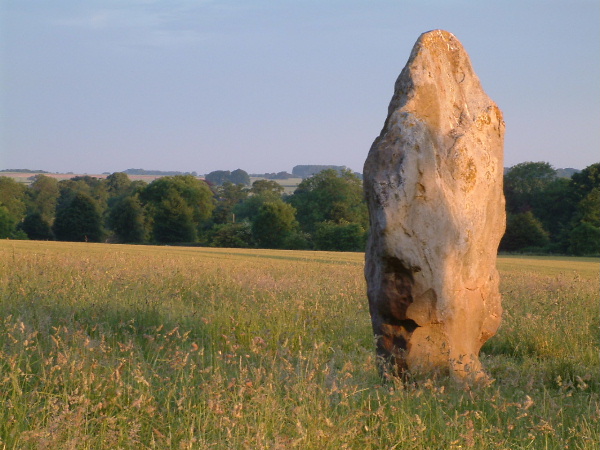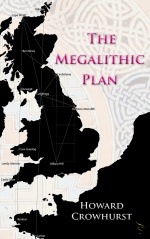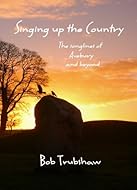<< Feature Articles >> Was Tara the Earth Goddess at Avebury? by Terence Meaden
Submitted by TerenceMeaden on Thursday, 17 June 2004 Page Views: 20721
Neolithic and Bronze AgeCountry: England County: WiltshireInternal Links:

By Terence Meaden, Much can be learnt of our ancestors’ pagan beliefs by studying ancient monuments, especially where there are standing stones, burial chambers and alignments. This article introduces what can be learnt by visiting Avebury and its landscape in central southern England, 20 miles north of Stonehenge.
On the western side of Avebury’s high henge-bank at dawn, we await the midsummer sunrise, as they did of old. By moving to the best place, we get in line with Stone 105 of the South Circle and the central concrete casting which marks the site of the destroyed Obelisk stone. And if it is a clear-sky dawn, we see how the sun rises in agreement with this alignment.
What can it mean? One logical argument, explained here, leads to the suggestion that the Neolithic Earth Goddess for the Avebury people was Tara and the Sky Father Taran. It offers a fascinating glimpse into the pagan religion which motivated the people into dragging huge stones from the hills and setting them into circles, coves and avenues.
MIDSUMMER FERTILITY
The Obelisk once stood 18 feet (6 metres) high in the middle of the South Circle. William Charleton saw it in 1663 and wrote that it was “the greatest stone of all, in the Centre of the lesser Circle”, and William Stukeley who measured the tall narrow stone in 1723 added that when standing it was “higher than the rest”. As for Stone 105 it stands on the south-western edge of the circle, its outline almost as circular as the cups hollowed into megaliths of northern and western Britain. In the context of fertility-religion symbolism, circularity implies femininity, just as the shape of tall narrow stones implies masculinity.
Using Hindu terminology we may say that the stone circle symbolises and serves as the yoni of the Earth Mother, and it is centred by a male lingam, like the God Siva in the bliss of everlasting intercourse with the Goddess, as expressed by the Tantric mantra “Om mani padme hum” -- the Jewel (penis) in the Lotus (vulva). Hence, the sun-to-stone coupling that visibly happens at sunrise can be construed as the consummation of Divine Marriage between Earth Mother and Sky Father. At first, the sun’s rays skim past the Obelisk and impregnate the female stone, 105. Two to three minutes later, the sun casts the Obelisk’s phallic shadow upon the female stone, uniting them in marriage. The connection happens only at midsummer, as similarly at Stonehenge (Meaden 1997). It is midsummer wedlock.
MAY DAY FERTILITY
What is more, the same thing occurs at Beltane but in combination with a different stone on the perimeter of the South Circle when the shadow unites with female stone 106 which bears on its inward surface the unmistakable mark of an open vulva with clitoris. In other words, like the Midsummer Marriage the annual May Fertility Festival is the time of the consummation of the gods between Sun and Earth, recalling Hindu beliefs about the fertilising powers of nature’s shadows, as with trees for instance (Eliade 1958, 315). Indeed, in India, Nepal, Bhutan, Tibet and Indonesia, and other countries where Hindu and Tantric beliefs continue, the yoni-lingam combination -- whether in symbolic form, representational or iconic art, or Tantric or regal practice -- denotes the union of the gods without which the reproduction and welfare of the world would cease.
So at Avebury we see that the antiquity of the ongoing May festival is traceable to the Megalithic Period 4000 years ago. Even in Christian times may-pole dancing continued at Avebury, as elsewhere in Britain, Germany etc., for these celebrations began as nothing less than a public ceremony of hierogamy in praise of the sexual union of God and Goddess (phallic pole implanted in female Earth), and persisted less recognisably into modern times as a rustic wedding of the May Queen and King
TOTTERDOWN AND TAR’TAR’DUN
Again, at Avebury there is more to infer about an ancient belief in the rite of the Marriage of the Gods. The name of the hill over which the sun rises at midsummer and at Beltane is Totterdown which makes it a very important hill indeed because that name could be a word survival from the Megalithic Age. Phonetically, there is little to choose between Tartardown and Totterdown, the name of the highest hill as viewed from Avebury’s circles. ‘Down’ derives from Gaelic ‘dun’ meaning ‘hill’, so Tartardun is the local ‘height of heights’ in the direction of the May Day and Midsummer sunrises. At times of hill-fog, low cloud-base and lightning strikes it is the place where Earth and Sky meet. Virgil’s epic the Aeneid recounts a sacred coupling like this when relating how a storm of lightning and thunder erupts “as Aeneas and Dido consummate their union, the storm signifying that the God of Heaven, or Sky Father, is approaching his marriage partner the Earth Mother”. Numerous early sources refer to hills and mountains as the points of contact for Gods of Sky and Earth.
Could Tara and Taran have been deity names of the hill people at Neolithic Avebury? Tara was a popular, widely-known, Indo-European name for the primal Earth Goddess, and she may have been so called in Proto-Indo-European ages like the British Neolithic. In India Tara was the best-loved of the pre-Vedic goddesses because she was the Earth Mother deity or Terra Mater. She was Tari for the Dravidians of Bengal, Turan in Etrusca, Taranis in Romano-Gaul, Terah for the Hebrews, Terra Mater in Rome, and there was a Tara in Greece and a Green Tara in Tibet.
The male equivalent was Taran, rain fertiliser of Earth and thunder-god. He was Taru for the Hattic people and Tarai in the Andamans. The thunder-god’s name in Scandinavia was pronounced Thor, in Germany Thunar or Donar, and for the Anglo-Saxons Thunaer (hence Thursday from Thor’s Day), perhaps via a link to Near-Eastern storm-gods like Thur the thunder/bull god in Phoenicia. For the Celts he was Taran in Wales and Torann in Ireland. Was he Taran in Britain? Maybe for Celtic Britain at least, because the Romans found that the Britons were Welsh-speakers, and the Norman Domesday Book records that Wiltshire countrymen were still speaking Welsh in 1086 CE. The origin of the word Taran-tara now provides a crucial link with the past. Taran-tara endures in English as a clarion cry or ‘magic bugle call’ used by hunters to invoke -- although they know it not -- the aid of pagan gods (Walker 1983, 976) whose powers were greatest when in congress.
Several hills in England are called Totterdown and many others ‘Toot’ or ‘Tot’ which linguists equate with sacred mound or sacred hill. The word ‘Tor’ for summits and rocky high points, as commonly found in south-west Britain, is related to Gaelic ‘Torr’ with the same meaning (Oxford Dictionary). In my home town of Bradford-on-Avon (which is 20 miles from Avebury, 25 miles from Stonehenge, and 30 miles from Glastonbury Tor), the local high point with its Iron Age fort is ‘Tory’, pronounced by locals as Tari, just as they articulate ‘George’ as ‘Jarge’. Therefore, was the hilltop east of Avebury, where the Gods of Earth and Sky met and over which the sun rises at Beltane and Midsummer, formerly called Taran-Tara Dun, and then Tar’tar’dun, the name we vocalise as Totterdown?
The Sacred Marriage, as between Tara and Taran, appeared in epics of Celtic centuries as the core concept in king-making (Walker 1983, 501-508). “No king could be allowed to rule unless he was an accepted spouse of the Goddess (who represented the earth) through her mortal incarnation, the queen”, as known for Tara In Ireland.
Is the Tar’tar’dun word-formation a coincidence -- or divine consequence? Tar’tar’dun of the Avebury Hills is the high point as viewed from Avebury, and it is the place from which the sun rises in line with Avebury’s yoni-lingam stones which are related to the Midsummer Sacred Marriage and the May Day Sacred Marriage.
‘PRE-VEDIC’ BRITAIN
To what extent could religious ideas of pre-Vedic India have had parallels in the west, if resulting from a corresponding spread of basic ideas westwards and eastwards from the Near East at the time of the agricultural revolution?
We know that votaries of the Irish goddess Kele meditated in Hindu yogi-fashion searching for inner perfection like eastern yogis (Walker 1983, 498). Cernunnos is a second-century CE Celtic horned figure depicted (on a cauldron) as seated in the Tantric lotus-position and there is a similar yogic horned image inscribed on an Irish megalith at Tara (Ric Kemp, private communication). ‘Tantric’ and ‘Tantra’ are names derived from ancient scriptures called Tantras, word-origin unknown but possibly related to Tantra’s commitment of sexual union as justified for the word Taran’tara. The archetypal birth-and-death Hindu goddess Kali appeared in Saxony as Kale or Cale, and as Kelle, Kele or Kale in Ireland! Irish priestesses were Kelles, from which the surname Kelly descended. Another Goddess, Sanskrit Kauri, is cognate with cowrie, the universally-loved vulva-shaped seashell. In view of the widespread Kali/Kauri/Kelle tour de force, Tara perhaps became differentiated as the Goddess’s earthen manifestation.
In short, was Tara the local Earth Goddess for Avebury and its downland? A seemingly direct link by way of symbolism follows. In the East the three-sided inverted isosceles triangle has from ancient times been both Tara’s symbol and the Tantric symbol. Was it so in the ancient West? Amazingly, the result of archaeological fieldwork close to Neolithic Avebury has led to the discovery of four heavy triangular stones of portable size in each of which a vulvar hole or cupmark has been hollowed out by hammering. Three came from the slopes of Tar’tar’dun! All are typical of yoni icons from Hindu and Tantric India.
Finally, high on Tar’tar’dun there is (1) exactly in line with the sunrise for Avebury’s Beltane stones a female, triangular-topped fallen stone with vulvar groove channelled in the middle (the vulva opportunely reddened by algae), and (2) near the top of Tar’tar’dun a standing stone with isosceles triangular outline. Can either, or both, be Tara’s Stone?
Citing Barbara Walker (1983, 452), “ancient sources from Akkadia show that Ishtar was the same Great Goddess revered all over the Near East under such names as Dea Syria, Astarte, Cybele, Aphrodite, Kore, Mari, etc”. In fact, Tara, Ishtar, Astarte, Inanna, Ashtoreth, are interrelated (different pagan cultures developing name variants as traditions changed and the ages passed). Several are worshipped under the star symbol. In Bengali, Tara means star.
THE COVE AT AVEBURY -- ANOTHER FEMALE SETTING
The same argument used for the megaliths of Avebury’s South Circle can be applied to stones of the adjacent North Circle. The Cove was the female centrepiece or genital shrine awaiting midsummer coitus with the rising sun. A male megalith was located a short distance in front, a little off-line to allow the sun to reach the Goddess Stone, swiftly followed by the fertilising shadow. The Cove too has a concordance of Sacred Marriage with the hill-peak Tar’tar’dun. The siting of Avebury’s circles seems to have been decided by the need to align midsummer sunrise with the top of Tar’tar’dun, in order to invoke a successful Marriage of the Gods, that the Avebury people may follow the Way of the Shakti.
In all lands and continents, Mother Earth was the oldest and for a long time the greatest of deities. She was probably a principal deity in the pagan beliefs of the megalithic era. So if Tara was the local Earth Goddess for Avebury and its high downs, and Taran the Sky God, who was the local river goddess? This has been researched by both Ric Kemp and the author.
Acknowledgements. This paper has been refereed by Tara scholar Ric Kemp and Tantric expert Mike Jelfs.
You can read more of Prof/Dr Meaden's work in Secrets of the Avebury Stones, reviewed here.
Terence Meaden's web site is: www.stonehenge-avebury.net
With thanks to Ric Kemp. His site is Avebury Megalithos - Lost Religion of the Neolithic (Archive link)
REFERENCES AND BIBLIOGRAPHY
ELIADE, M. (1958). Patterns in Comparative Religion. Sheed and Ward, London.
MEADEN, T. (1997). Stonehenge, the Secret of the Solstice. Souvenir, 43 Gt Russell St, London, WC1B 3PA
MEADEN, T. (1999). Secrets of the Avebury Stones. Souvenir, 43 Gt Russell St, London, WC1B 3PA
REES, A. and B. (1961). p.273. Celtic Heritage. Grove Press, New York.
TAYLOR, Timothy (1996). The Prehistory of Sex. Fourth Estate, London.
WALKER, Barbara. (1983). The Woman’s Encyclopaedia of Myths and Secrets.
Are you pining for the much missed 3rd Stone Magazine? Submit your article, book review or trip report for publication here and you could reach a large worldwide readership






 We would like to know more about this location. Please feel free to add a brief description and any relevant information in your own language.
We would like to know more about this location. Please feel free to add a brief description and any relevant information in your own language. Wir möchten mehr über diese Stätte erfahren. Bitte zögern Sie nicht, eine kurze Beschreibung und relevante Informationen in Deutsch hinzuzufügen.
Wir möchten mehr über diese Stätte erfahren. Bitte zögern Sie nicht, eine kurze Beschreibung und relevante Informationen in Deutsch hinzuzufügen. Nous aimerions en savoir encore un peu sur les lieux. S'il vous plaît n'hesitez pas à ajouter une courte description et tous les renseignements pertinents dans votre propre langue.
Nous aimerions en savoir encore un peu sur les lieux. S'il vous plaît n'hesitez pas à ajouter une courte description et tous les renseignements pertinents dans votre propre langue. Quisieramos informarnos un poco más de las lugares. No dude en añadir una breve descripción y otros datos relevantes en su propio idioma.
Quisieramos informarnos un poco más de las lugares. No dude en añadir una breve descripción y otros datos relevantes en su propio idioma.